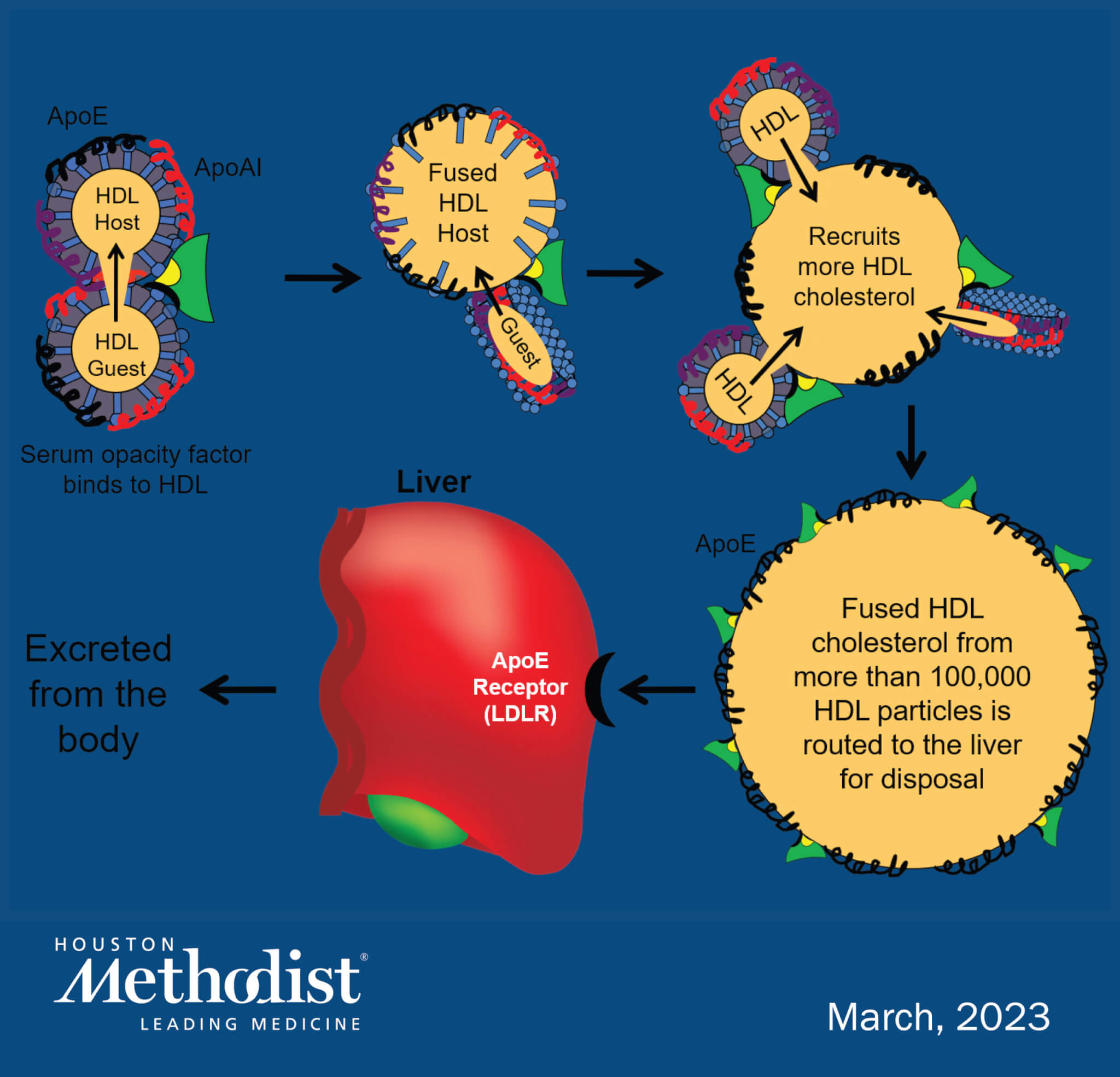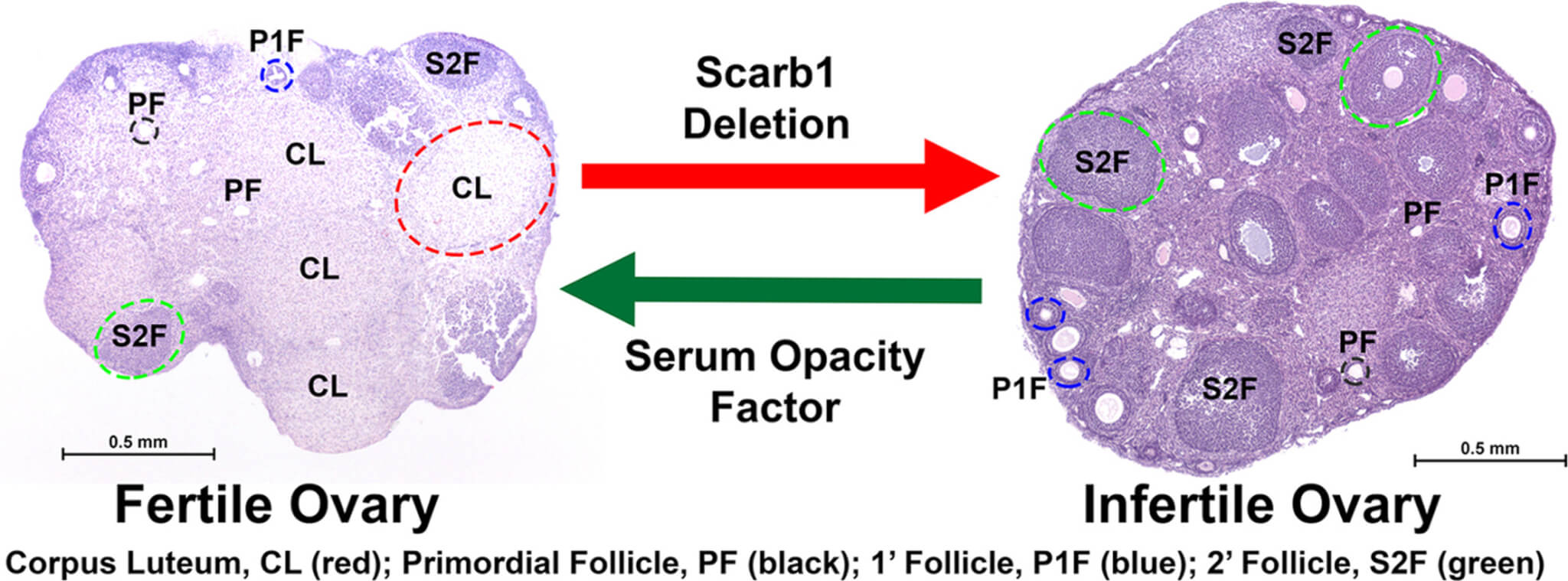HOUSTON — High cholesterol levels could be contributing to infertility among women, a recent study reveals. At the same time, scientists find that a powerful protein could reverse this trend. Researchers found that high levels of “good” high-density lipoprotein (HDL) cholesterol may inhibit a woman’s chances of conception.
In their study, scientists at Houston Methodist Research Institute utilized a potent bacterial protein capable of reducing cholesterol levels by 40 percent within three hours. They successfully reversed infertility in sterile mice by lowering their HDL cholesterol levels.
HDL is commonly known as “good” cholesterol because it transports excess fats from various tissues to the liver so the organ can break it down. This in turn lowers overall cholesterol levels. However, if HDL function is impaired, lipid metabolism can be negatively affected, and it may become as detrimental as its counterpart, low-density lipoprotein (LDL), often called “bad cholesterol.” High LDL levels can lead to cholesterol accumulation, various diseases, and infertility.
“We are working with a protein, called serum opacity factor, with unique characteristics. In our experiments, serum opacity factor lowered cholesterol levels by over 40% in three hours. So, this protein is quite potent,” says Dr. Corina Rosales, the study’s lead author and assistant research professor of molecular biology in medicine at the Houston Methodist Research Institute, in a media release.

The introduction of the protein, serum opacity factor, altered the structure of HDLs that carry cholesterol, making it easier for the liver to dispose of the excess cholesterol that might be obstructing conception. The researchers also pointed out that the serum opacity factor’s remarkable effect on HDL could present an alternative to statins, the current preferred treatment for lowering cholesterol in individuals with atherosclerosis.
The team observed that when these sterile mice took a lipid-lowering drug, their LDL and HDL cholesterol levels decreased — temporarily alleviating their infertility. Encouraged by these results, the researchers then turned to the bacterial protein, serum opacity factor, known to selectively target HDL.
“Serum opacity factor is known mainly in the context of bacterial strep infections where it serves as a virulence factor. But it was also discovered that this protein only reacts to HDL and not to LDL or other lipoproteins,” says Dr. Rosales. “We hypothesized that perhaps administering serum opacity factor to these mice might help restore their fertility, as well.”
Approximately one in five women of childbearing age in the U.S. is unable to conceive after a year of trying. To investigate HDL dysfunction, the researchers used preclinical mouse models with unnaturally high circulating HDL cholesterol levels. These mice were ideal for studying cholesterol-related issues, but were also completely sterile.

(credit: Dr. Corina Rosales et al.)
“Cholesterol is the backbone of all steroidal hormones, and an orchestra of hormones is needed to have a fertile animal. We know that the ovaries are studded with receptors for HDL, so the metabolism of HDL had to play a very important role in fertility for that reason,” Dr. Rosales further explains.
Based on these promising preclinical results, the researchers plan to conduct a clinical study examining lipid levels in women undergoing infertility treatments where the underlying causes are unclear. If these patients have high HDL levels, serum opacity factor could potentially be a future treatment option.
“Even if we were to help one percent of women struggling to conceive, it would be life-changing for them. That’s where we believe our research can make the most impact,” concludes Dr. Rosales.
The study is published in the American Society for Biochemistry and Molecular Biology’s Journal of Lipid Research.
You might also be interested in:
- Best Ways To Lower Cholesterol: Top 5 Tips Most Recommended By Health Experts
- Frequent sex is best when trying to conceive: Sperm study suggests fertility doctors giving bad advice
- Women overweight when pregnant could impact fertility in sons, but not daughters
South West News Service writer Jim Leffman contributed to this report.

